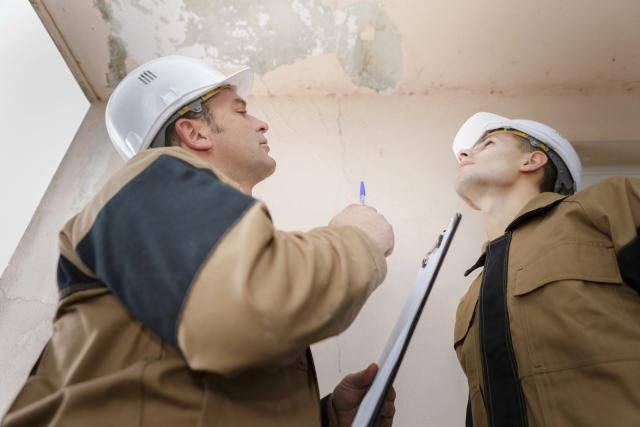
Window Screen Cleaning Tips for Homeowners
Dirty window screens block natural light and collect allergens, making regular cleaning essential...

Filing a roof insurance claim involves specific steps and requirements that can significantly impact your out-of-pocket costs. Most homeowners purchase insurance when they buy their home, but policies vary widely in what roof damage they actually cover, making it essential to understand your specific coverage. Insurance companies typically cover damage that is sudden and accidental, such as damage caused by weather events like lightning, wind, or hail. When your claim gets approved, you'll pay your deductible—typically $500 to $2,000, though some policies require higher amounts. The most important distinction involves policy types: an Actual Cash Value (ACV) policy pays only the depreciated value of your roof, while a Replacement Cost Value (RCV) policy covers the full cost of replacing your roof with new materials.
Deciding when to file an insurance roof claim can save you thousands of dollars and prevent premium increases. The decision requires careful consideration, as filing at the wrong time can result in increased premiums or policy cancellation. Understanding which events justify a claim—and when paying out-of-pocket makes more sense—helps protect both your roof and your finances.
Most homeowners' insurance policies cover roof damage from "sudden and accidental" events rather than gradual wear and tear. These covered perils typically justify filing a roof insurance claim:
|
Covered Damage |
What It Includes |
Typical Coverage |
|---|---|---|
|
Wind Damage |
Shingles blown off, structural damage from high winds |
Full replacement of damaged areas |
|
Hail Damage |
Dimpling, bruising, or cracking of shingles |
Repair or replacement, depending on severity |
|
Fire Damage |
Structural damage from flames or heat |
Complete roof replacement is often covered |
|
Falling Objects |
Tree limbs, debris, causing punctures or structural damage |
Repair of affected sections |
|
Lightning Strikes |
Direct hits causing fire or electrical damage |
Full replacement is often necessary |
|
Weight of Ice/Snow |
Structural damage from excessive accumulation |
Repair or partial replacement |
Roof damage from neglect, lack of maintenance, or normal wear and tear is excluded from coverage. Many policies also exclude damage common in specific regions, such as hurricane damage in coastal areas—these require separate coverage riders.
Best for filing: Damage from sudden weather events with clear documentation and repair costs that significantly exceed your deductible.
Not every roof problem warrants an insurance claim. Filing multiple claims can lead to premium increases or policy non-renewal. Consider these factors before filing:
|
Repair Cost |
Deductible |
Recommendation |
|---|---|---|
|
Below deductible |
Any amount |
Pay out-of-pocket |
|
Up to 20% above deductible |
$500-$2,500 |
Consider paying out of pocket |
|
21-50% above deductible |
$500-$2,500 |
Weigh premium impact vs. benefit |
|
More than 50% above deductible |
Any amount |
Filing likely beneficial |
Insurance companies track all inquiries, even those that don't result in claims. Only contact your insurer after assessing the damage and determining that filing makes financial sense. Ensure you have thorough documentation of the damage and its cause before initiating the roof claim process.
Best for paying out-of-pocket: Small repairs under $2,000 where the payout would be minimal after your deductible.
Your roof insurance policy contains specific details that directly affect your out-of-pocket costs when filing a claim. Many homeowners discover these important differences only after damage occurs. Your policy outlines the amount you'll receive for repairs, the expenses you'll cover first, and the maximum amounts your insurer will pay.
These coverage types employ different methods to calculate your payout, resulting in significant financial differences for homeowners.
Replacement Cost Value (RCV) covers the full cost to replace your damaged roof with new materials, excluding depreciation. If your roof replacement costs $15,000, your insurer pays the entire amount minus your deductible. This coverage provides substantial protection, especially for older roofs.
Actual Cash Value (ACV) pays only the depreciated value of your roof at the time of damage. Your policy takes into account the age, condition, and remaining useful life of your roof when calculating this amount. Here's how depreciation affects your payout:
|
Roof Age |
Original Cost |
Depreciation |
ACV Payment (minus $4,000 deductible) |
|---|---|---|---|
|
5 years |
$10,000 |
$1,500 |
$4,500 |
|
10 years |
$10,000 |
$3,000 |
$3,000 |
|
20 years |
$10,000 |
$6,000 |
$0 |
ACV policies typically cost less in monthly premiums but can result in substantial expenses. A 10-year-old roof with $15,000 in damage that has depreciated by $5,000 would only receive $9,000 after a $1,000 deductible under an ACV policy.
Your deductible represents the amount you pay before insurance coverage begins. Deductibles come in two main types:
Fixed dollar amounts include standard options like $500, $1,000, or $2,500. Percentage-based deductibles typically range from 1-5% of your home's insured value.
Percentage deductibles can create surprisingly high costs. A home insured for $150,000 with a 5% deductible requires $7,500 out-of-pocket before coverage starts. The same home with a fixed $500 deductible means you only pay $500 before insurance covers the rest.
Coverage limits set the maximum amount your insurer will pay for roof damage. Some policies include "stated limits" for roof coverage—a predetermined maximum regardless of actual replacement costs. If your roof replacement costs $17,000 but your stated limit is lower, you pay the difference. It's important to understand how these limits affect your roof damage insurance claim, as they can significantly impact your out-of-pocket expenses.
Deductible choices directly impact your premiums:
|
Deductible Choice |
Premium Impact |
Out-of-Pocket Risk |
|---|---|---|
|
Higher deductible |
Lower premiums (up to 20% savings) |
Greater financial responsibility |
|
Lower deductible |
Higher premiums |
More financial protection |
Choose a deductible based on both monthly savings and your ability to cover that amount when damage occurs. An insurance roof claim with a high deductible may not provide enough benefit to justify filing.
Review your declaration page to confirm whether your roof falls under RCV or ACV coverage, your specific deductible amount, and any coverage limits that apply. Understanding these details before you need them prevents unexpected costs during the claims process.

When you discover roof damage, thorough documentation becomes essential for a successful claim. Begin by inspecting visible damage from the ground and inside your home.
|
Documentation Type |
What to Include |
Tips for Success |
|---|---|---|
|
Photos/Videos |
Close-ups and wide shots of all the damage |
Date-stamp all images |
|
Written Records |
List of damaged areas with measurements |
Note specific locations |
|
Weather Reports |
Storm confirmation from local sources |
Save meteorological data |
|
Before Photos |
Pre-damage roof condition |
Establishes baseline |
Create a dedicated folder for all claim documentation, organized by date. This systematic approach proves valuable when working with adjusters and contractors.
Most policies require damage reporting within 30 to 60 days, though some specify "as soon as reasonably possible." Contact your insurer promptly to:
Request your claim number and adjuster's contact information during this call. Use this claim number in all future communications and document every conversation with dates, names, and discussion details.
Your insurer will schedule an inspection within 1 to 2 weeks of filing. Prepare for this visit by:
Accompany the adjuster during their inspection to point out all damage. Request a copy of their assessment report and review it carefully to ensure that all damage is accurately documented.
Obtain 2 to 3 estimates from licensed local contractors experienced with insurance work. These professionals understand how to document damage in terms that insurance companies recognize.
If contractor estimates exceed the adjuster's assessment, request a supplement—additional funds to cover the difference. This process typically requires:
Initial insurance estimates often undervalue actual repair costs, so persistence during negotiations frequently pays off.
The final payment process depends on your policy type. Replacement Cost Value policies require submitting receipts to recover withheld depreciation.
Payment typically follows this timeline:
Keep copies of all contractor invoices, material receipts, and payment proof. Request warranties for both materials and workmanship from your contractor. Consider scheduling a final insurance inspection to verify completion, though this isn't always required.
Maintaining detailed communication records and understanding your policy rights helps ensure you receive appropriate compensation for roof damage.
The roof insurance claim process contains several traps that can cost homeowners thousands of dollars. Even experienced property owners make mistakes that result in denied claims or reduced payouts. Understanding these common pitfalls—and how to avoid them—can mean the difference between a successful claim and significant financial loss.
Insurance policies require claim filing within specific timeframes—often 6 months to 1 year after damage occurs. Delays create serious consequences:
|
Consequences of Delayed Filing |
Impact on Claim |
|---|---|
|
Potential claim denial |
Complete loss of coverage |
|
Difficulty proving storm causation |
Insurance may blame pre-existing conditions |
|
Worsening damage |
Higher repair costs, potentially exceeding coverage |
Pro Tip: Contact your insurance company immediately after discovering damage. The sooner you report it, the faster an adjuster can assess it, and the quicker repairs can begin.
Insurance adjusters often provide initial estimates that don't cover full repair costs, sometimes underpay by 20% on average. This tactic relies on homeowners' unfamiliarity with actual repair costs.
Counter this strategy by:
After severe weather, out-of-town contractors often go door-to-door offering quick repairs. Watch for:
Pro Tip: Choose contractors with a local presence who have experience handling insurance claims for roofs—they understand what insurers look for and can help guide the process.
Without comprehensive evidence, your claim might face denial or delay. Proper documentation forms the foundation of successful roof claims.
Essential documentation includes:
Thorough record-keeping serves as your best protection against these common pitfalls. Maintaining detailed documentation isn't just helpful—it's a strategic advantage.
Getting the most out of your insurance claim on the roof requires strategic preparation and informed choices throughout the process. The right approach can mean the difference between receiving full compensation and paying thousands out of pocket for repairs.
Obtaining 2-3 estimates from different contractors gives you the negotiating power to work with your insurance company. These comparisons help you understand the true scope of repairs and identify pricing discrepancies.
|
Benefits of Multiple Estimates |
Impact on Your Claim |
|---|---|
|
Better understanding of repair needs |
Ensures all damage gets addressed |
|
Price comparison |
Prevents undervaluation |
|
Negotiation leverage |
Speeds up the claims process |
Choose contractors based on their professionalism, local reputation, and experience with insurance work rather than just comparing prices.
Strong documentation protects you throughout the entire process. Take clear, high-quality photos and videos from multiple angles as soon as you discover the damage. Keep detailed logs of all conversations with your insurance company, including the date, names involved, and the topics discussed. Save weather reports that confirm storm conditions if your damage resulted from severe weather.
Know what recoverable depreciation means for your specific policy type and understand your rights when disagreements arise with your insurer. This knowledge becomes essential if you need to dispute your adjuster's initial assessment.
Local roofers familiar with roofing insurance claims can help maximize your payout and speed up the funding process. They understand how insurance companies operate and are familiar with local building codes that may impact your repairs.
Best for: Homeowners who want to ensure they receive fair compensation without unnecessary delays or reduced payouts.
GET THE ESSENCE OF RELEVANT HOME
IMPROVEMENT TOPICS IN LESS THAN 5 MINUTES

Thanks for joining our homeowners’ community.
Stay tuned!
Choose the category
Choose the category